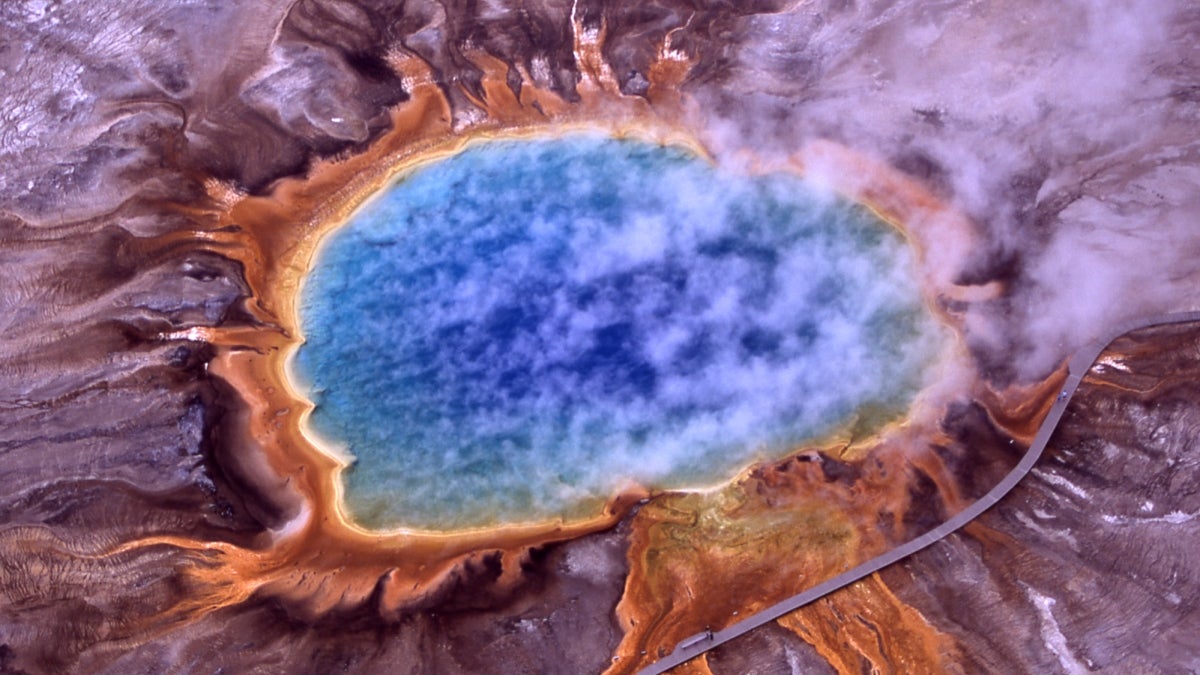With a new round of nuclear brinkmanship between Washington and Pyongyang and the fly-by of a near-Earth asteroid in the headlines the past few weeks, the last thing we needed was another doomsday scenario. Then worrisome news of a “planet-killing” supervolcano erupted last week, setting off a chain reaction of increasingly sensational headlines.
The news came right out of research at Arizona State University, but not the misinformation.
To help set the record straight and understand just how much angst we should apportion to supervolcano eruptions, ASU Now talked with one of the researchers involved in the work, Christy Till, an assistant professor in ASU's School of Earth and Space Exploration. Till is an earth and planetary scientist whose research focuses on magma formation and volcanoes.
Christy Till
Question: Your research certainly caught a lot of people’s attention. What were your results, how did they get out there, and then what happened?
Answer: A freelance reporter came to a big volcano conference this summer, where my PhD student Hannah Shamloo presented her recent research on the events preceding Yellowstone’s last large eruption 631,000 years ago. This reporter pitched a story to the New York Times about our work and, after a follow-up interview with us, the story was published on Tuesday, Oct. 10.Hannah’s results indicate that there was activity that heated up the magma below the volcano decades before that big eruption 631,000 years ago.
The story was then picked up by a variety of media outlets, which misquoted the New York Times article and introduced new misinformation, and suggested that Yellowstone was due to erupt sooner than previously thought (and in some cases that the eruption would be larger than previously thought). There is no evidence that Yellowstone will erupt in the near future, or in a big eruption. It may never erupt ever again!
Q: How can we know when a volcano might erupt?
A: Scientists from the Yellowstone Volcano Observatory and academia monitor the volcano constantly to know that it shows no unusual signs of activity or imminent eruption today. We monitor volcanoes by looking at changes in the height of ground surface, changes in the chemistry of the gas being emitted, and earthquakes produced by magma or hydrothermal fluid movement beneath the volcano. It is usual to have earthquake activity and ground deformation at Yellowstone and other active volcanoes every day; most of it is caused by movement of hot fluids that produce the geysers like Old Faithful.
But scientists look for unusual activity that suggests the sleeping volcano is awakening. Using these methods scientists are able to identify when there is a higher risk of the eruption in the next several months to year. We don’t see anything like that right now at Yellowstone, nor have we in the recent past.
Also academic scientists like myself and my research group research the conditions in the magma chamber preceding past eruptions by looking at the crystals in the associated volcanic deposits. These are like a black-box recorder of what happened. This allows us to build up an understanding of the events and conditions to look for if the volcano awakens, and how long we might have before an eruption.
Q: What would happen if the Yellowstone supervolcano erupted?
A: Yellowstone has had many more small eruptions than big eruptions. In fact, Yellowstone has had 23 small eruptions that produced a small lava flow since the last large eruption 631,000 years ago. Volcanoes aren’t like earthquakes; they don’t have reoccurrence intervals, so they are not “due to erupt.” So if the volcano were to erupt again, which it might never do, it is more likely to be a small eruption than a large one. The probability of a large eruption again in the future is very, very, very tiny.
Q: What else are you learning about supervolcanoes through your research?
A: Our research uses zones in crystals from the deposits from past eruptions to reconstruct the events preceding past eruptions from lots of different kinds of volcanoes around the world. The zones in these crystals are like the rings in trees; they allow us to reconstruct the climate in the magma chamber during the lifetime of the crystal — the temperature, pressure and chemistry — leading up to past eruptions. The goal is to better understand what causes a volcano to have a big vs. a small eruption and how long we have from signs of unusual activity at the volcano until an eruption. These are relatively new techniques, and we’ve still got a lot of work to do to build up this understanding, but we’re getting there one study at a time.
Top photo: Aerial view of Grand Prismatic Spring, Yellowstone National Park, one of many natural springs heated by underground magma chambers beneath the park. Photo courtesy of U.S. National Park Service
More Science and technology

Podcast explores the future in a rapidly evolving world
What will it mean to be human in the future? Who owns data and who owns us? Can machines think?These are some of the questions pondered on a newly launched podcast titled “Modem Futura.” Co-…

New NIH-funded program will train ASU students for the future of AI-powered medicine
The medical sector is increasingly exploring the use of artificial intelligence, or AI, to make health care more affordable and to improve patient outcomes, but new programs are needed to train…

Cosmic clues: Metal-poor regions unveil potential method for galaxy growth
For decades, astronomers have analyzed data from space and ground telescopes to learn more about galaxies in the universe. Understanding how galaxies behave in metal-poor regions could play a crucial…

